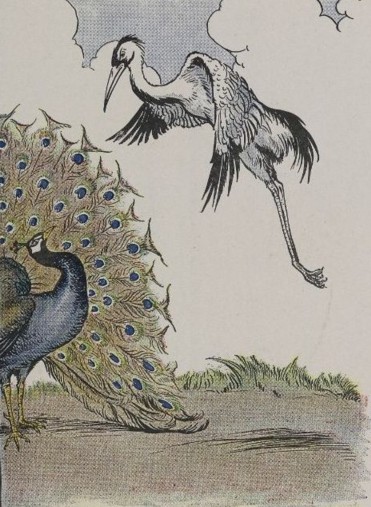PART A_1
Let’s learn vocabulary. Listen and repeat the words and the sentences with your tutor.
PART A_2
| 1. vanity | /VEN-et-i/ |
| -when someone thinks they are very attractive and is too interested in their own appearance | |
| With his vanity, he can post a hundred or more of his photos in social media. | |
| 2. impress | /im-PRES/ |
| -to cause someone to admire or respect you | |
| To impress the panel, she talked about all the awards she has received ever since high school. | |
| 3. spread | /spred/ |
| -to open something that has been folded or make something flat, so it covers a larger area | |
| The bird spread its wings so that it could fly. | |
| 4. soar | /sor/ |
| -to move quickly and smoothly in the sky, or to move quickly up into the sky | |
| The bird soared up high to go after its mother. | |
| 5. freedom | /FRI-dam/ |
| -the condition or right of being able or allowed to do, say, think, etc. whatever you want to, without being controlled or limited | |
| She was only able to experience genuine freedom when she left the house of her parents. |
PART B_1
Let’s read the story. Please read it aloud, and I will check your pronunciation and intonation.
PART B_2
The Peacock and the Crane

A Peacock, puffed up with vanity, met a Crane one day, and to impress him spread his gorgeous tail in the Sun.
“Look,” he said. “What have you to compare with this? I am dressed in all the glory of the rainbow, while your feathers are gray as dust!”
The Crane spread his broad wings and flew up toward the sun.
“Follow me if you can,” he said. But the Peacock stood where he was among the birds of the barnyard, while the Crane soared in freedom far up into the blue sky.
The useful is of much more importance and value than the ornamental.
PART C_1
Let’s answer comprehension questions. Please answer them based on the story.
PART C_2
| 1. | Why did the peacock spread his tail? |
| 2. | How did the crane react to this? |
| 3. | What did the peacock do when the crane flew up to the sun? |
PART D_1
Let’s discuss the story. Please answer the questions below and express your opinions.
PART D_2
| 1. | What do you think the crane felt after the peacock spread its tail? |
| 2. | What do you think the peacock felt after the peacock flew up? |
| 3. | What do you think could have happened if the peacock had not boasted his tail? |
| 4. | Do you agree with the moral of the story? Why or why not? |
| 5. | How can the moral of the story be applied in life? |
REVIEW AND FEEDBACK
Now, let us review the things that you learned in this lesson.
ではこのレッスンで学んだことを振り返りましょう。
(Please give a short feedback on how your student did on your class.)
| Grammar 文法 |
Pronunciation 発音 | Vocabulary 単語 |
Comprehension 理解 |
|
|---|---|---|---|---|
 GOOD GOOD |
文法の誤りはほとんどなく、完全な文章で話すことができる | ほとんどの単語をはっきりと正しく発音することができる | 習った表現を適切に使うことができる | 文章を理解し、質問に正しく答えることができる |
 FAIR |
文法の誤りはあるが、完全な文章で話すことができる | 発音の練習が必要な言葉がいくつかある | たまにミスはあるが、習った表現を適切に使うことができる | 文章を完全に理解するのは難しく、質問に正しく答えられないときもある |
 POOR |
文章で話すのは難しく、単語だけで話すことができる | 発音の練習が必要である | 習った単語と表現を少しだけ使うことができる | 文章を理解するのは難しく、質問に答えるのは難しい |
Parts of this lesson material are based on:
An eBook from The Project Gutenberg.
This eBook is for the use of anyone anywhere at no cost and with almost no restrictions whatsoever. You may copy it, give it away or re-use it under the terms of the Project Gutenberg License included with this eBook or online at www.gutenberg.org
An eBook from The Project Gutenberg.
This eBook is for the use of anyone anywhere at no cost and with almost no restrictions whatsoever. You may copy it, give it away or re-use it under the terms of the Project Gutenberg License included with this eBook or online at www.gutenberg.org